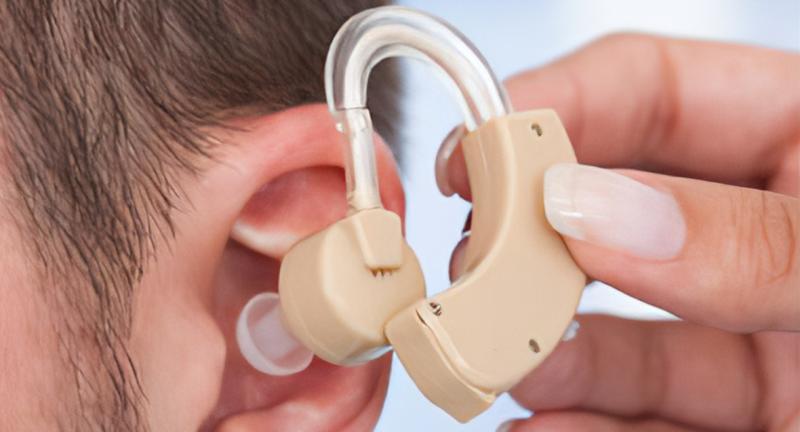Ear tube devices have revolutionized the treatment of middle ear infections and chronic ear conditions, providing an effective solution to reduce fluid buildup and restore hearing. Also known as tympanostomy tubes, these small cylindrical implants are surgically placed into the eardrum to ventilate the middle ear and prevent recurrent ear infections. This article delves into the latest trends, technological innovations, and market dynamics shaping the ear tube devices industry, offering valuable insights for healthcare professionals, patients, and industry stakeholders alike.
Evolution and Technological Innovations in Ear Tube Devices
Ear Tube Devices has significantly progressed from traditional materials to biocompatible and bioresorbable options, enhancing patient comfort and reducing complications. Early-generation tubes were primarily made from silicone or fluoroplastic, which required manual removal after a certain period. Today’s advancements include biodegradable tubes that naturally dissolve over time, eliminating the need for surgical extraction. Additionally, innovations in design have improved aeration efficiency, optimized fluid drainage, and minimized infection risks.
Modern ear tubes also incorporate antimicrobial coatings to prevent bacterial colonization and biofilm formation, a major challenge in middle ear infections. These cutting-edge materials help extend the functional life of the tubes, improving therapeutic outcomes. Continuous research focuses on smart devices, such as tubes integrated with sensors to monitor middle ear pressure and detect infections early, promising a new dimension in personalized otological care.
Critical Applications and Clinical Benefits of Ear Tube Devices
Ear tube devices are primarily indicated for patients suffering from otitis media with effusion (OME) and recurrent acute otitis media (AOM), conditions prevalent especially in pediatric populations. Persistent fluid accumulation behind the eardrum leads to hearing loss and discomfort, adversely affecting speech development and quality of life. By enabling ventilation and fluid drainage, ear tubes restore normal middle ear function and prevent further infections.
In addition to pediatric use, adults with eustachian tube dysfunction or chronic ear infections also benefit from ear tube implantation. The procedure is minimally invasive and typically performed under local anesthesia, offering quick recovery times. Clinical studies consistently demonstrate that early intervention with ear tube devices decreases the frequency and severity of ear infections, reduces antibiotic usage, and prevents long-term hearing impairment, making them indispensable in otolaryngology practices globally.
Key Market Drivers Impacting Adoption of Ear Tube Devices
Several factors are propelling the growth of the ear tube devices market worldwide. Increasing prevalence of chronic ear infections, especially among children under the age of five, is a predominant driver. Rising awareness among caregivers and healthcare providers about the risks associated with untreated ear conditions has led to higher rates of diagnosis and treatment.
Furthermore, expanding geriatric populations prone to eustachian tube dysfunction and improved healthcare infrastructure in emerging markets contribute to market expansion. The availability of minimally invasive surgical technologies and outpatient treatment options has also enhanced patient access and convenience. In addition, ongoing investments by medical device companies into research and development are continuously introducing innovative solutions that improve clinical efficiency and patient outcomes.
Navigating Comprehensive Market Research Reports for Ear Tube Devices
For stakeholders interested in detailed market intelligence, there are extensive research compilations offering insights into competitive landscapes, emerging trends, and future opportunities in the ear tube devices sector. These reports encompass quantitative analysis of global demand, segmentation by material type, end-user demographics, and region-specific growth drivers.
Such analytical resources also feature profiles of leading companies, their product portfolios, and strategic initiatives like partnerships, mergers, and new product launches. Moreover, forecasts examining the impact of regulatory frameworks, technological advancements, and pandemic-related disruptions provide a thorough understanding of market prospects. These exhaustive market research reports serve as essential guides for investors, manufacturers, and healthcare professionals making informed business or clinical decisions.
Commercial Considerations Driving Procurement of Ear Tube Devices
Hospitals, ambulatory surgical centers, and specialized otolaryngology clinics form the primary end-users procuring ear tube devices. Procurement decisions are influenced by factors such as product efficacy, patient safety profiles, cost-effectiveness, and supplier reliability. Biodegradable and antimicrobial-coated tubes, despite higher initial costs, offer long-term benefits by minimizing re-interventions and reducing infection rates.
Healthcare providers increasingly seek devices approved by stringent regulatory authorities to ensure quality and performance. Furthermore, manufacturers’ ability to provide comprehensive support services, including training for surgical staff and post-operative care guidelines, impacts purchasing preferences. Volume purchasing agreements and tender contracts shape commercial dynamics, particularly within public and private healthcare systems, emphasizing the need for competitive pricing and innovation.
Future Outlook and Emerging Opportunities in Ear Tube Device Market
The future of ear tube devices is poised for transformative growth powered by ongoing innovations and expanding clinical indications. Research into nanotechnology-enabled coatings, drug-eluting tubes that deliver localized antibiotic therapy, and integration of wireless diagnostic tools promise to redefine standard care protocols.
Additionally, personalized medicine approaches tailoring device selection based on patient-specific anatomical and pathological factors are gaining traction. Expansion of pediatric and adult otological services in developing regions, coupled with heightened government initiatives to combat infectious diseases, creates new market avenues.
Strategic collaborations between medical device manufacturers, research institutions, and healthcare providers will accelerate product development and adoption. As digital health and telemedicine solutions evolve, remote monitoring of ear conditions via smart tube devices can emerge as a game changer. Overall, the ear tube devices industry demonstrates robust potential for impactful growth in the coming decade, backed by a blend of clinical need and technological progress.
Get this Report in Japanese Language: 耳管デバイス
Get this Report in Korean Language: 이어 튜브 장치
Read More Articles Related to this Industry
Application of Technology by Pharmaceutical Firms to Improve Medical Compliance
About Author:
Money Singh is a seasoned content writer with over four years of experience in the market research sector. Her expertise spans various industries, including food and beverages, biotechnology, chemical and materials, defense and aerospace, consumer goods, etc. (https://www.linkedin.com/in/money-singh-590844163)
